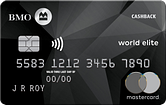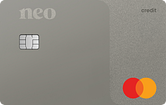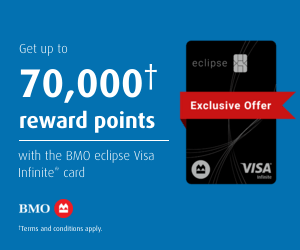Credit utilization is one of the biggest factors in determining your credit score. It’s a ratio that compares how much credit you have available across all types of credit vs. how much of it you're currently using.
As you can guess, this number fluctuates constantly based on your spending and repayment habits. The good news is, by improving your credit utilization—ideally keeping it under 30%—you’ll quickly see your credit score jump up. Here’s everything you need to know about how to find your credit utilization and ways you can improve it.
Key Takeaways
- Credit utilization is the amount of credit you have and how much of it you’re using.
- Credit bureaus use credit utilization as a factor in determining your credit score.
- High credit utilization makes it harder to qualify for credit.
Never miss an amazing deal again + get our bonus 250+ page eBook for FREE. Join 50,000 other Canadians who receive our weekly newsletter – learn more.
What is credit utilization?
Credit utilization is simply how much credit you have and how much of it you’re using. Credit utilization is usually shown as a percentage - it’s the credit balance you're using in relation to your total available credit.
Lenders of all kinds use credit utilization to determine whether or not to extend credit to you, it’s a big factor in calculating your credit score. Whether you’re shopping for a new credit card, looking for a mortgage, or buying a car, your credit utilization is an important factor.
How to calculate your credit utilization ratio
All you have to do to calculate your credit utilization ratio is add up everything you owe and divide it by the total amount of credit you have available. Multiply the result by 100 to get the percentage of credit used.
(Total credit balance / Total credit available) * 100 = Credit utilization %
So, for example, if you have a credit card with a balance of $1,000 and a limit of $3,000, here's what your formula would look like:
($1,000 / $3,000) * 100 = 33%
Include only revolving credit in your calculation. Revolving credit is credit that you can borrow from repeatedly while making regular payments. Credit cards and lines of credit are classic examples of revolving credit.
You don’t need to include installment loans. Think of installment loans as those payments that are fixed - things like mortgages, car loans, student loans, or any other personal loans.
Pro tip: Installment loans do show up on your credit report and play a part in your overall credit score, but they're not taken into consideration when it comes to credit utilization.
How does credit utilization affect your credit score?
According to Equifax, one of the major credit monitoring bureaus in Canada, credit utilization accounts for 30% of your credit score - one of the biggest factors. This means that improving your credit utilization can have a dramatic impact on your overall credit score.
Here are all of the factors that Equifax and TransUnion use to come up with your credit score:
- Payment history: 35%
- Credit utilization: 30%
- Credit history: 15%
- Public records: 10%
- Inquiries: 10%
So, if you’re hoping to boost your credit score, consistently making payments on time and improving your credit utilization ratio will help you see the most dramatic results.
How to improve your credit utilization
Having a credit utilization ratio over 30% can hit your credit score pretty badly. Fortunately, there are things you can do to lower that ratio (and see your credit score improve). We’ll start with the easiest strategy, before moving on to tips that may take more time.
Increase your credit limits
Our first suggestion should only take a few minutes. Log into your credit card account or call customer service and ask to increase your credit limits.
Typically, your credit card company will ask for your updated income amount. They might also ask if you’ve changed careers.
If you’ve made consistent payments and usually pay off your balances, most credit card companies will accommodate your request. You’re also likely to get a credit limit increase if it’s been a while since you applied for the card and you haven’t updated your income in some time (assuming it’s gone up).
Why it helps: Raising your credit limit improves your credit utilization even if you’re borrowing the same amount.
Let’s take our previous example of owing $1,000 on a $3,000-limit credit card. Now, assume your credit limit was raised to $4,000 (and you still owe $1,000). Your credit utilization ratio would drop from 33% to 25%.
As long as you don’t increase your spending along with the higher credit limit, your credit utilization will improve.
Get a new credit card
If you’ve been thinking about getting another credit card, consider that it could improve your utilization ratio. Plus, you can enjoy welcome bonuses, earn rewards for spending, and open up another line of credit.
We should caution you that your credit score will take a temporary hit, since applying for a credit card results in a hard inquiry. Getting a new card will also lower the average age of your credit accounts, so be aware of these impacts before applying for credit.
Why it helps: This is another way to increase the amount of available credit (just like increasing the credit limits on your existing cards). So, as long you keep your spending low and make regular payments, you should see your credit utilization improve.
Pay off your balances
This one is dependent on your financial situation, but if you carry a balance on any of your revolving credit, paying it off will reduce the other side of the credit utilization equation – your credit balances.
If you currently have credit card debt with high interest and need help paying it off, we suggest looking into a balance transfer credit card. These cards offer introductory balance transfer offers, where you'll get a very reduced rate for a short period of time.
As an example, one of the best offers is with the MBNA True Line® Mastercard®, which has a balance transfer offer of 0% for 12 months, with a transfer fee of 3% of the amount transferred.
Why it helps: So far, we’ve looked at raising the amount of available credit, but remember that reducing the amount of credit you’re using is another way to boost your utilization ratio. For example, if you get your credit card balance down to $500 (from $1,000) and your credit limit stays the same at $3,000, you’ll see your credit utilization go from 33% to around 17%.
Pay off your credit cards more frequently
Do you find that even though you intend to pay off your credit card at the end of every month, your balance creeps up and you can’t?
Try this strategy - instead of paying your card once or twice a month, make more frequent payments in order to pay off the balance. For instance, if you get paid once a week, make a point of paying off your credit card whenever you get paid.
Not only will the balance stay in check, but you’ll also save on the interest your credit card provider would charge if you carry a balance.
Why it helps: By making payments, you're lowering the credit balance that the credit card company would be reporting, thus lowering your utilization ratio—even though you're still using your credit card for the same amount of purchases.
How to check your credit score and report
Before you can lower your credit utilization ratio, you’ve got to know what it currently is. Fortunately, you can access your credit score for free through Borrowell, Credit Karma, and possibly even your bank.
If you’d like to see your entire credit report along with your credit score, you can access your free credit report once a year from Equifax and TransUnion. These are the major credit monitoring services in Canada. They offer additional credit monitoring services that you might be interested in buying.
TransUnion Credit Monitoring
If you’re hoping to find your credit score and tools for building your credit, take a look at KOHO Credit Building. This service does cost $7-$10 per month and requires a KOHO account, but it helps you establish credit by reporting small monthly payments to one of the credit bureaus. While this option takes time, it can help someone with limited access to credit boost their score.
KOHO Credit Building
FAQ
What is a good utilization rate for credit?
In general, 30% or lower is considered a good credit utilization rate. Any number higher than this could signal to lenders that you’re struggling financially.
Does 0% utilization hurt your credit score?
Having a 0% credit utilization could actually signal to lenders that you’re not using your financial tools wisely. Lenders (and credit bureaus) like to see that you’re using credit and responsibly paying it off. Not using your credit at all is a red flag.
Should I use 100% of credit utilization if I pay it off each month?
Although you can do this, it can be tricky to ensure your payment goes through before the high account balance is reported to the credit bureaus. It’s usually better to have a much higher credit limit, allowing you to spend more without maxing out the card before paying it off.
creditcardGenius is the only tool that compares 126+ features of 231 Canadian credit cards using math-based ratings and rankings that respond to your needs, instantly. Take our quiz and see which of Canada's 231 cards is for you.












 GC:
GC: 














.png)





















 $100 GeniusCash + Earn up to 15,000 Welcome Bonus Membership Rewards® Points.*
$100 GeniusCash + Earn up to 15,000 Welcome Bonus Membership Rewards® Points.*
Comments
Leave a comment
Required fields are marked with *. Your email address will not be published.
Showing 7 comments